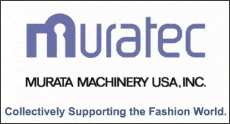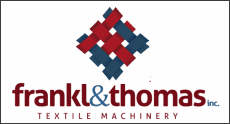


2017 brings mostly positive reviews from industry leaders
Posted January 17, 2018
By Devin Steele (DSteele@eTextileCommunications.com)
eTC sent questionnaires to selected leaders of the textile and apparel industry and its supply chain, for inclusion in our annual Review & Forecast edition.
Following is a summary of responses from those companies – manufacturers and suppliers – that participated in the survey. Note that some participated only on the condition of anonymity, either for proprietary reasons, the fact their companies are publically traded or they are part of an employee-owned company. Read related Forecast from many of these industry leaders.
Manufacturers
Matt Poovey, president of Champion Thread in Gastonia, N.C., described 2017 as “busy and exciting.”
“Our push into new markets both in terms of products and geography was the primary driver of this growth,” he said.
Buoyed by a continued expanding U.S. economy, Poovey added that he anticipates another strong year as it continues to capitalize on the modern, USA-based lean manufacturing platform it has been investing in over the last decade, he added.
Michael Lavroff, president of Jason Mills LLC, Milltown, N.J., a manufacturer of knit textiles, said his company saw a revenue increase of about 5 percent in 2017.
“More importantly, gross profit also grew by a similar amount,” he said. “Several factors contributed to this – chief among them was a combination of concentrated marketing efforts in some of our niche areas backed up by solid product development.”
David Poston, president of fiber maker Palmetto Synthetics LLC, Kingstree, S.C., reported that 2017 volume was up about 10 percent over 2016. However, he added, overall revenue was down due mostly to price erosion and general market conditions. Also, automotive production was down slightly from 2016 and yarn spinning continues to be slow after several years, he noted.
Meanwhile, a Southern yarn spinner who asked to remain anonymous indicated a better year-over-year in 2017: “We saw a slight increase in sales in 2017. This can be attributed to some new markets we have entered.”
Suppliers
Though overall sales increased at Frankl & Thomas, Greenville, S.C., some sales were lost as a result of general slowdown in the industry, said its president, Al Thomas III.
“Two major customers filed for bankruptcy and other customers just cut back,” said Thomas, whose company represents a number of parts and equipment suppliers from around the world. “All in all, sales were up because of yarn spinning and nonwovens.”
Last year was somewhat soft for Navis TubeTex, a Lexington, N.C.-based supplier of textile finishing equipment, according to President & CEO Will Motchar.
“There was a lot of activity on developing projects, but many didn’t come to fruition in 2017, but they are coming into play for 2018,” he said. “I think there was some level of uncertainty in terms of political and economic activity for the year.”
Bob McCurdy, president of GTI Graphic Technology, Inc. (GTI), Newburgh, N.Y., said that the company saw increased activity in the textile segment last year compared to recent years.
“I believe that a number of factors contributed to this growth, including the strong economy, the increased use of digital technology in the sector, our strong OEM network and our increased focus in the segment,” said McCurdy, whose company, a supplier of tight tolerance lighting systems and services for critical color viewing, color communication, and color matching assessment to several industries, exhibited at the AATCC’s International Conference, Techtextil North America and the IFAI Expo last year.
Shima Seiki USA, Monroe Township, N.J., saw a substantial increase in its business compared to previous years, reported Matt Llewellyn, vice president of the U.S. arm of Japan-based knitting machine manufacturer Shima Seiki Mfg., Ltd.
“I believe this is due to increased confidence in the U.S. economy and increased methods for efficiencies and methods of production,” he said. “There has been a lot of discussion regarding the higher cost of domestic production being offset by less inventory and on-demand stock replenishment.”
Bill Moody of circular knitting machine manufacturer Vanguard Pai Lung, Monroe, N.C., noted that 2017 was a good year for the company, with strong machine export sales and growing sales of new products.
Charlotte, N.C.-based American Suessen Corporation, the U.S. arm of Germany-based Spindelfabrik Suessen GmbH, reported a slightly better 2017 from 2016, but it was on par to the average of the last several years, according to President Jim Blalock.
“Based on the beginning of 2017, we were prepared for a slow year,” he said. “But the yarn business continued to steadily improve throughout the year and we remain optimistic going into 2018.”
A global supplier to the yarn sector said the last two years has been essentially flat in the U.S.
“Despite overall GNP growth, it is possible that the ongoing retail shift to online has resulted in a better efficiency in inventories impacting overall volume temporarily,” he said.
Harry Simmons, owner of Industrial Lab Equipment (ILE), Charlotte, N.C., said he was happy to report that its business for testing and quality control items and textile scales picked up 80 percent in 2017. International business was the major reason, and domestic orders continued strong, he said. Domestically, this is due to its loyal customers that have stayed with ILE through thick and thin, he added.
Tony Hooimeijer, president of Greensboro, N.C.-based Karl Mayer North America, said the company saw good growth in 2017, primarily in its business units for warp knitting and technical textiles (coated products and glass composites).
“In warp knitting, it looks driven by more customer confidence, which leads to more modernization – replacing old machines with more productive new machines,” he said. “But what is a very good sign is that we also see more new machines used in apparel applications, mainly elastic sportswear and sports shoes.
“In technical textiles we saw two things happening,” he added. “As in warp knitting, more replacement upgrading in coated products (weft insertion machines) occurred. In composites we see more interest from overseas companies that set up plants here for the wind energy business. But there has also been growth by local customers that specialize in niche markets. Carbon remains in the early development stages and high-tech, niche applications though and has not shown a breakthrough in high-volume markets such as automotive.”
Martin Gopman reported mixed results for the two Miami-area companies he owns, Universal Sewing Machine Co., and Unicraft Corp. These firms sell primarily to three sectors of the market: 1) industrial sewing machines to end users – factories; 2) cutting tables to end users through dealers; and 3) sewing machine tables and stands to dealers.
Sewing machine sales increased 30 percent compared to 2016, which indicates increased production capacity, he said, and sewing machine parts sales increased 46 percent.
“Increases mainly came from government contractors, such as military, and to a lesser extent from apparel manufacturers,” Gopman said. “We have noticed an increase in the number of smaller, local, fashion manufacturers and contractors. There were also increased sales to non-apparel market, such as home décor and boating.”
Cutting tables sales increased by 64 percent, which also indicates increased manufacturing capacity in the garment production, although a large part of its increase went to Asia, he reported.
Meanwhile, sales of sewing machine tables and stands to its domestic and Latin American dealers dropped by 17 percent, which may indicate that market growth is not evenly distributed geographically, Gopman said. Another reason is increased competition from China for these products, he added.
Frank Henderson, president of Henderson Sewing Machine Co., Andalusia, Ala., called 2017 a good sales year, closing with a nice increase in sales volume, with automotive, military and niche markets leading the pack, he said.
“Customer-centered solutions were developed for the sewn products industries by turning innovative talk into tangible results,” he said.
Zimmer Austria Incorporated (USA), Spartanburg, S.C., operates in a small sector of the North American textile space: textile and carpet printing, digital printing and coating and finishing. Roland JP Zimmer, vice president of North American sales, reported that carpet digital printing remained “very strong” in 2017, with several complete new production lines installed in Georgia at leading carpet manufacturers, and he sees that trend continuing this year.
On the textile printing side, it experienced some recovery in 2017 after having seen this market sector continuously decline for several years as a consequence of textile printing moving offshore, mainly to Middle East and Far East countries, he added.
“The highlight here (in the U.S.) is the digital textile printing sector, which is still very small (3 percent worldwide) but definitely growing,” Zimmer said.
A U.S.-based capital equipment supplier who wished to remain nameless reported a strong 2017 after a “very slow” 2016.
“All we can speculate is that a couple years of consumer demand recovery encouraged longer-term mill investments for replacement and technology, probably not capacity expansion,” he said.
Last year came on weaker than 2016 for a capital equipment OEM based in Europe with a U.S. branch. “There are no specific reasons other than clients did not realize projects, or they were less of them,” said the company head, who asked to remain nameless.
Steve Adams Sr., president of chemical supplier Seydel-Woolley & Co., Inc., Pendergrass, Ga., noted that business was stable in 2017 but flat for most of the year due to business conditions experienced by its customers.












